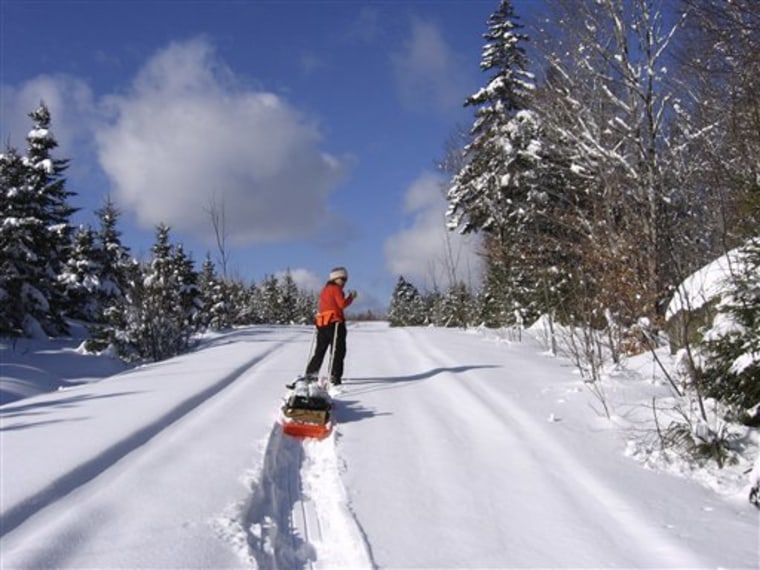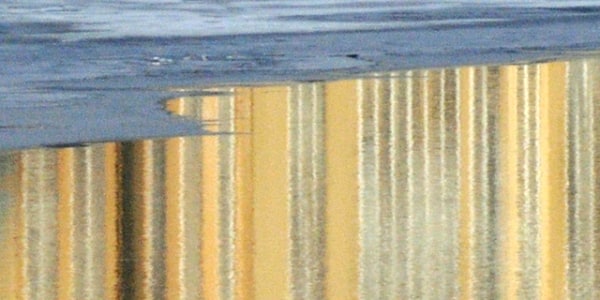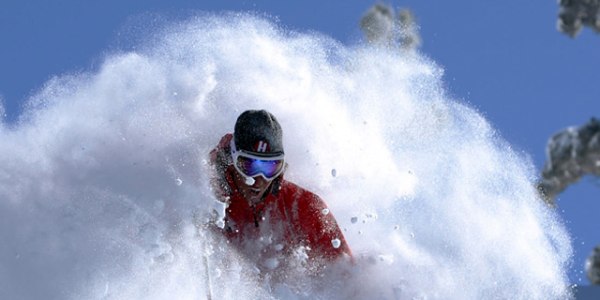The solitude, quiet and frozen cold of a winter landscape are great reasons to head outdoors in January and February. You can snowshoe, ski, trek or go sledding. Sleep overnight in a tent, lean-to, yurt or cabin. Tree branches may snap, and lake ice may groans as it freezes and buckles. Or maybe the only sound you'll hear is the gentle shoosh, shoosh, shoosh of your snowshoes in powder.
But the backcountry in winter can also be a challenging landscape to stay safe in, and if things go wrong, they can go wrong fast. That may sound scary, but as long as you're prepared, you might be surprised by how satisfying and exhilarating it can be to slow down and closely observe the environment and your place in it.
Here are a few tips on safely enjoying backcountry activities in the winter.
Planning
I've done most of my winter trekking and camping in New England, already a remote and beautiful place, but doubly so when the temperatures dip well below zero and snow covers the landscape.
My first overnight excursions were snowshoe trips with experienced winter campers into a remote log cabin in Maine. Going with someone knowledgeable about winter trekking is critically important when you're a novice. They can help with your gear list, plan a reasonably distanced overnight or day excursion, and give you practical tips and guidance along the way.
Slideshow 42 photos
Winter wonderland
Preparation is your most important step. Winter trekking is perfectly suited to the neurotic personality because the creation of lists and piles of stuff is key: clothing, gear, food, routes, contacts — it seems to never end. And once out in the frozen deep, the methodical mind is forced to slow down to survey, assess and physically get through the landscape.
Outdoor clubs are a good resource for the novice and experienced hiker alike. They have loads of free information on their websites, and for small membership fees typically offer discounts on backcountry lodging, sponsored trips, classes, maps, and gear.
The Appalachian Mountain Club and The Mountaineers cover the East and West coasts respectively. Both have primers and resources useful in any cold climate, and links to other national and international outdoor groups.
Most U.S. state parks and the National Park Service websites are full of tips, lists and trip ideas for any season. And if you go in the winter, you'll encounter many fewer visitors than summertime.
For instance, Yellowstone National Park saw over a million visitors in July 2010, but in January just 61,100 made the trek. Of those, only 97 were backcountry campers.
Al Nash, public affairs officer at Yellowstone, characterized winter weather in Yellowstone as "mild or really challenging." When we spoke in mid-December, it was a balmy 11 degrees and sunny there, which Nash found delightful. He was exuberant about the park in winter, but also cautious. "We encourage people to expand their comfort zone, but do it in steps."
Nash went on to say that "if you've never gone winter camping before, find a way to ease into it. Don't make the first time in Yellowstone; make the first time in your backyard, or at a spot you can get out of easily and back to your house or a warm hotel."
Getting dressed
Maine's Baxter State Park has over 200,000 acres of wilderness for recreation year-round. The park's chief ranger, Ben Woodard, says "winter magnifies the mistakes a novice trekker may make. There is a constant heat challenge travelling in the backcountry. The balance is to stay warm, dry and well-fed and hydrated when you travel."
Getting dressed for winter activities is all about layers. Put them on and take them off to regulate your body temperature. It may not produce the most flattering look, but you'll be happier (and safer!) if you do it right. Generally you should employ the three-layer system: base, insulating, and shell.
Slideshow 27 photos
Popular ski and
The base layer is typically a synthetic because the material absorbs little water, wicks moisture away from your skin and dries quickly. Silk is a good non-petroleum based alternative, and there's also wool. Steer clear of cotton; it may feel cozy next to your skin but it absorbs water and dries slowly, a sure recipe for hypothermia.
Wool or fleece are good choices for an insulating layer because they keep you warm and dry out easily. Goose down can be used if you'll be in extreme cold, but unless you keep it dry, it won't keep you warm. Carry a goose-down parka with you that you can pull on during rest stops or at night in camp. It's light, compresses into a small ball, and keeps you toasty warm.
Your shell layer protects against wind, snow or rain. As with every other piece of gear, you can get a shell in many different flavors: windproof, water-resistant, breathable, non-breathable, and soft. Choose the one best for your activity and weather conditions.
One of the most important reasons to dress in layers is to manage perspiration. Most synthetics will wick moisture away from your skin, but once you stop moving around, any moisture at all is going to make you cold. And once you get cold, it's harder to warm up; hypothermia can become a real danger.
Distance
Woodard, the Baxter ranger, says the more snow they have, "the slower life in the park becomes. It takes longer to travel in deep snow, longer to do chores or work assignments because you're balancing" the challenges of the environment.
Generally, winter travel takes longer than treks in other seasons. Plan on covering just a third of the ground you normally would in non-winter conditions. If there's snow, it simply takes longer to plow through it, and you'll spend more time just finding the trail.
The gear you'll need depends on the activity you've chosen and how long you'll be out. Woodard notes that "for experienced winter travelers, skis and snowshoes make travel relatively easy. But for someone who hasn't used them, the person will fall more, getting wet from the snow and the exertion."
So start slowly. Short day hikes under a mile can still be incredibly satisfying. "The snow muffles the sounds in the mountains and woods," Woodard says. "Many times wildlife can be spotted easier if they don't have the option of white camouflage. We have visitors who enjoy day trips in the fringes of the park as well as multi-day visitors who want to traverse the park, climb a mountain or visit their favorite location."
In addition to Baxter State Park, Maine has miles of logging roads that are unplowed in winter, perfect for snowshoeing or cross-country skiing (if you don't mind sharing with the occasional snowmobilers!).
The roads also make it easier to pull a sled, instead of hauling all your gear in a backpack. An expedition sled, or pulk, can run upwards of $600, but you can easily build your own using a heavyweight plastic sled, small PVC piping and some rope.
So never mind the drudgery of winter at home. Drop that snow shovel and get out to the backcountry. You'll be glad you did.


